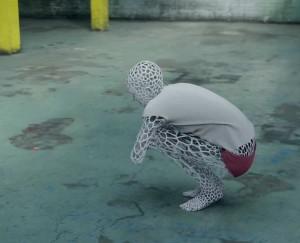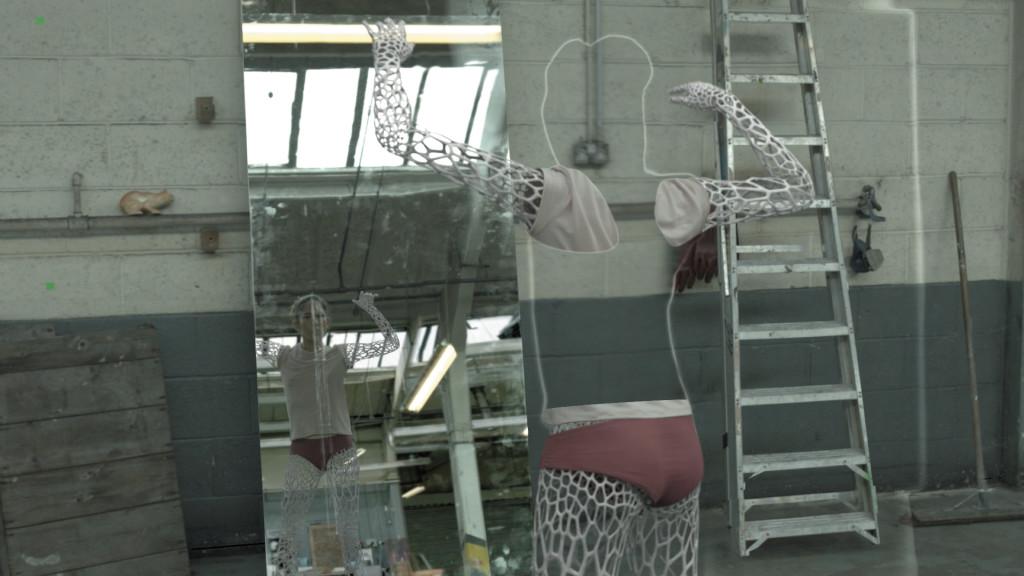 The hallmark of good special effects is that they make you forget that what you’re seeing isn’t real. Take, for example, the Chemical Brothers’ new music video, “Wide Open,” which features a woman dancing in an abandoned warehouse. At first, the woman is solid and real, but as she dances, her body gradually becomes transparent and insubstantial. The transformation is beautiful to watch, and looks so natural that it’s easy to suspend disbelief. In reality, an incredible amount of work went into creating the four-and-a half-minute video – which, remarkably, was filmed in one continuous shot.
The hallmark of good special effects is that they make you forget that what you’re seeing isn’t real. Take, for example, the Chemical Brothers’ new music video, “Wide Open,” which features a woman dancing in an abandoned warehouse. At first, the woman is solid and real, but as she dances, her body gradually becomes transparent and insubstantial. The transformation is beautiful to watch, and looks so natural that it’s easy to suspend disbelief. In reality, an incredible amount of work went into creating the four-and-a half-minute video – which, remarkably, was filmed in one continuous shot.
Dominic Hawley and Nic Goffey, aka Dom&Nic, have been making award-winning music videos and commercials for over a decade, but “Wide Open” was the first time they had ever worked seriously with 3D printing as a special effect. They worked with special effects company The Mill to turn dancer Sonoya Mizuno transparent for the video, which features Beck on vocals and choreography from award-winning choreographer Wayne McGregor.
The team used 3D modeled white mesh to replace Mizuno’s real limbs for what The Mill’s Head of 3D and co-3D Lead Artist David Fleet describes as “the longest and hardest camera and body track that we’ve ever taken on.” First, a LiDAR scan was taken of the entire set, which would help later when the team needed to replace Mizuno’s limbs with see-through lattice – the background had to be perfectly matched to her movements. At first, they had discussed piecing the video together using several takes, but the natural light in the warehouse changed so quickly that that wasn’t possible.
 Eleven GoPro cameras were mounted around the set to record every angle of the performance. First, Mizuno ran through the choreography a few times in a motion capture suit.
Eleven GoPro cameras were mounted around the set to record every angle of the performance. First, Mizuno ran through the choreography a few times in a motion capture suit.
“Even though Sonoya is a great dancer, we obviously couldn’t expect every take to be identical, which made a motion capture solution somewhat limited,” said Fleet. “However, we figured that if we were to use a portable motion-capture suit and get Sonoya to run through the choreography a few times on the day, then at least we’d have some animation to start with…. By far the most labour intensive part of the project was the 3D tracking (matchmoving). Our team of animators had to position each limb so that it exactly matched Sonoya’s pose on all 6,798 frames.”
Parts of Mizuno’s body had to be “painted out” of the film so that they could be replaced by the see-through mesh and the warehouse background. If this wasn’t complicated enough, her movement meant that her limbs were continually blocking her own body. Then there was the lighting. Sunlight streaming through the windows would have gone directly through the mesh and hit the parts of Mizuno’s body that were still solid, which meant that animators had to carefully track and rebuild light and shadows.
To accomplish all of this, a custom tool was created by co-3D Lead Suraj Harrington-Odedra. The tool was able to “automatically erase given sections of the live action plates, as long as there was an accurate camera track and detailed 3D geometry,” according to Fleet. Full-body 3D scans were taken of Mizuno so that CG renderings could replace the parts of her body and clothing that were blocked by her limbs, but that needed to show through once her limbs had become mesh. A special light-shadow tool was created so that the sunlight and shadows could be “rebuilt” by the compositors.
 The mesh itself was modeled in Houdini, and textured in Photoshop and MARI to accurately resemble a 3D printed resin lattice. It’s not often that you see images made to look 3D printed, without being physically printed. This was a challenge as well , and required careful study of various 3D printing materials.
The mesh itself was modeled in Houdini, and textured in Photoshop and MARI to accurately resemble a 3D printed resin lattice. It’s not often that you see images made to look 3D printed, without being physically printed. This was a challenge as well , and required careful study of various 3D printing materials.
“The more modern materials appeared to have a slightly more sandy look,” Harrington-Odedra told FX Guide, “whereas the older resins tended to have more of a striated look, which was a by-product of how an object was printed. The final look was comprised more of this striated texture, mainly due to the fact that it was more visually interesting than a simpler, sand-like texture.”
Discuss this project in the Dancer Into 3D Printed Mesh forum over at 3DPB.com.
You can see a behind-the-scenes look at the process here:
[Images/Source: FX Guide]Subscribe to Our Email Newsletter
Stay up-to-date on all the latest news from the 3D printing industry and receive information and offers from third party vendors.
You May Also Like
3D Printing Financials: Fathom Struggles in Financial Quicksand During Critical Transition
Facing a year of key transitions and financial pressures, Fathom (Nasdaq: FTHM) has filed its annual report for 2023 with the U.S. Securities and Exchange Commission (SEC). The document outlines...
Latest Earnings Overview for Australian 3D Printing Firms Titomic and AML3D
Australian 3D printing manufacturing firms Titomic (ASX: TTT) and AML3D (ASX: AL3) reported their financial results for the period from July to December 2023, marking the first half of their...
3D Printing Webinar and Event Roundup: April 7, 2024
Webinars and events in the 3D printing industry are picking back up this week! Sea-Air-Space is coming to Maryland, and SAE International is sponsoring a 3D Systems webinar about 3D...
3D Printing Financials: Unpacking Farsoon and BLT’s 2023 Performance
In the Chinese 3D printing industry, two companies, Farsoon (SHA: 688433) and Bright Laser Technologies, or BLT (SHA: 688333), have recently unveiled their full-year earnings for 2023. Farsoon reported increases...
































